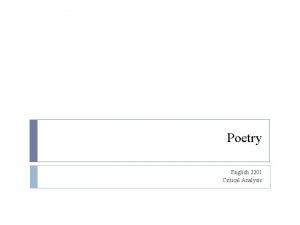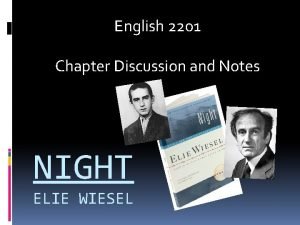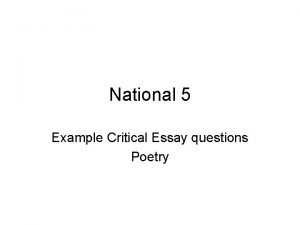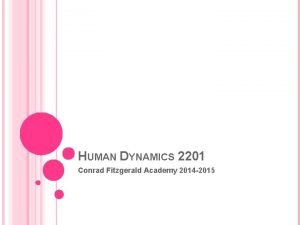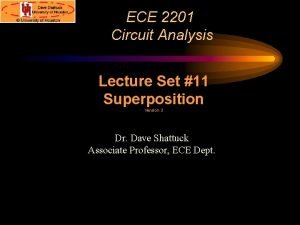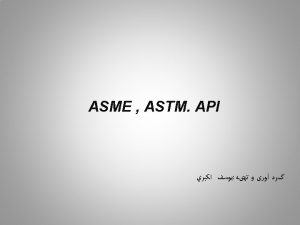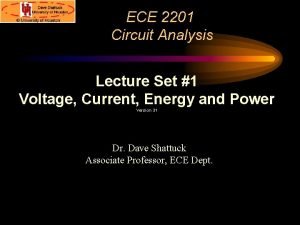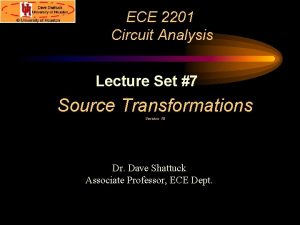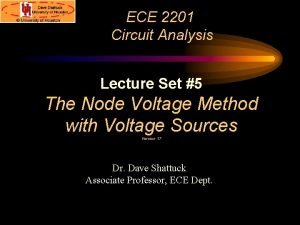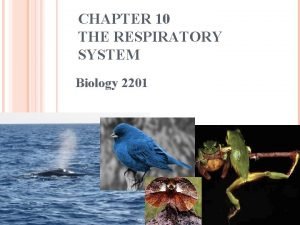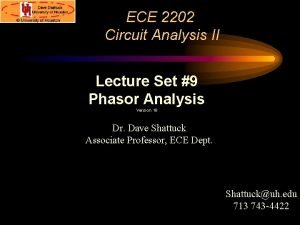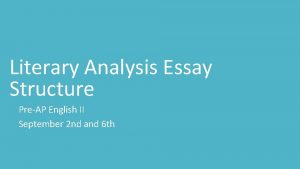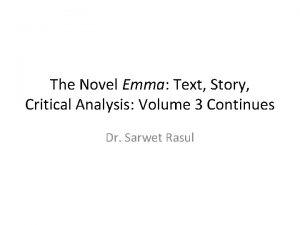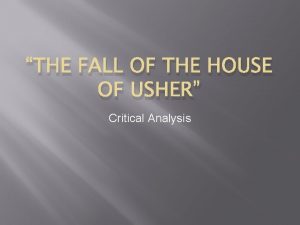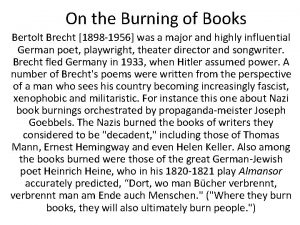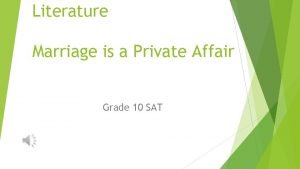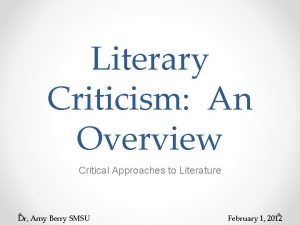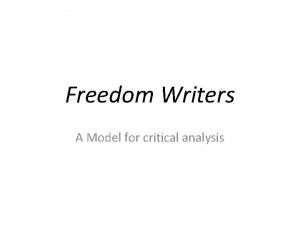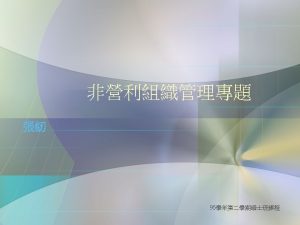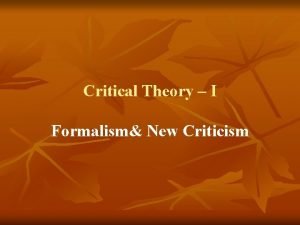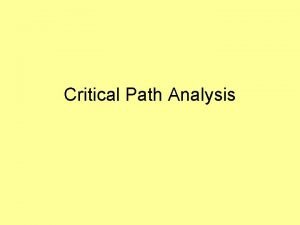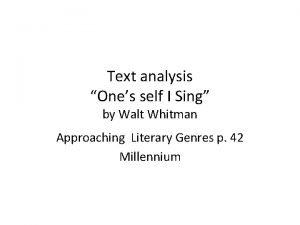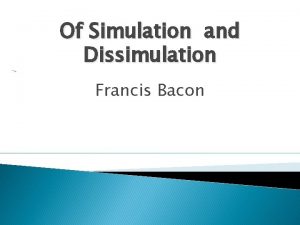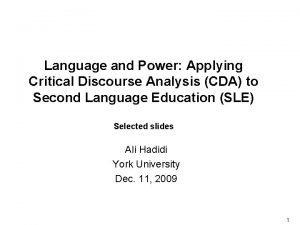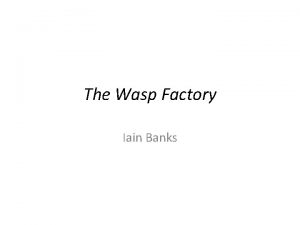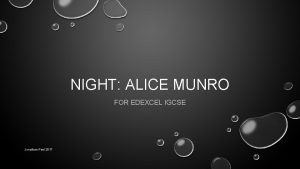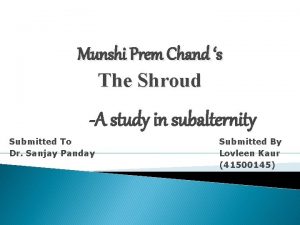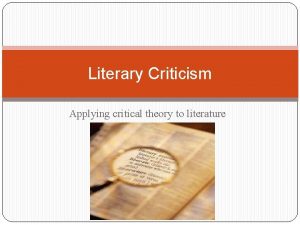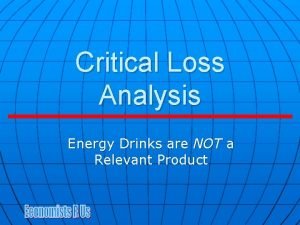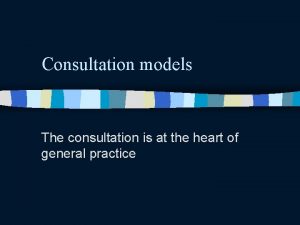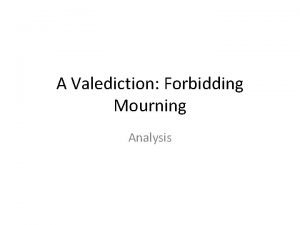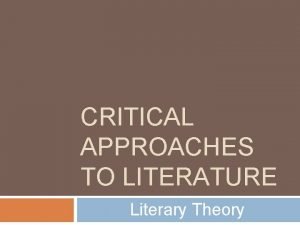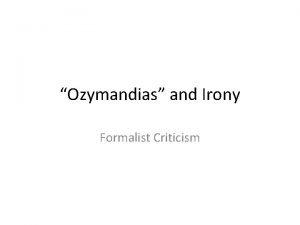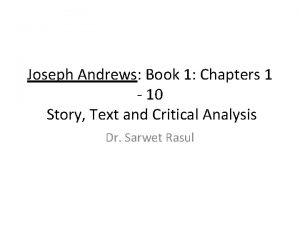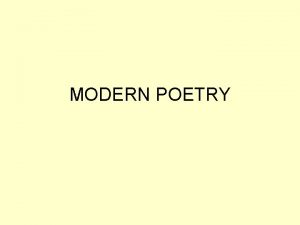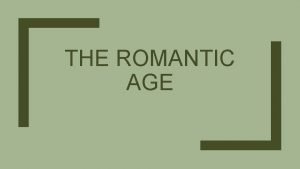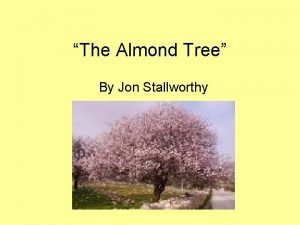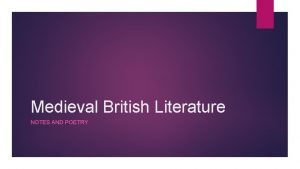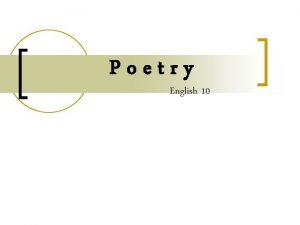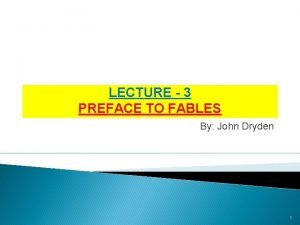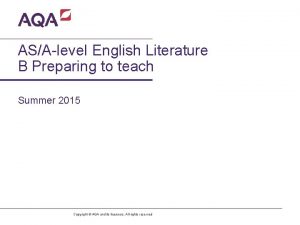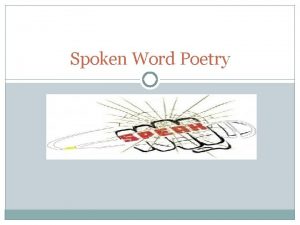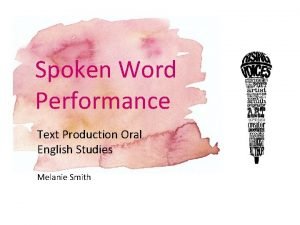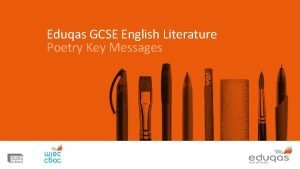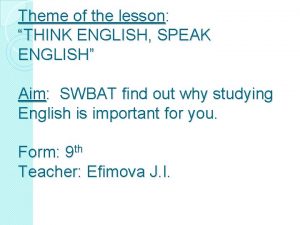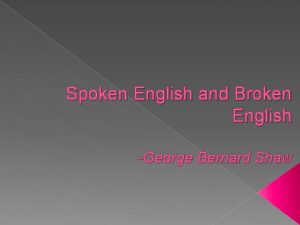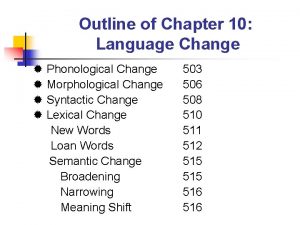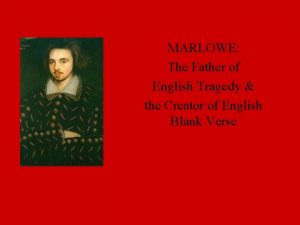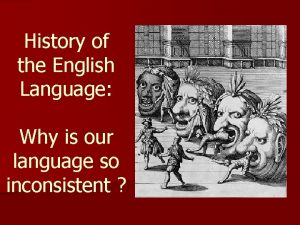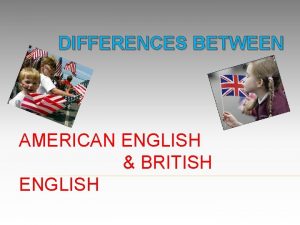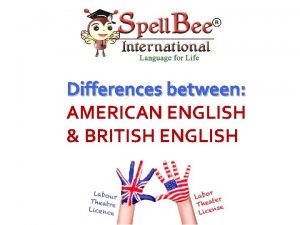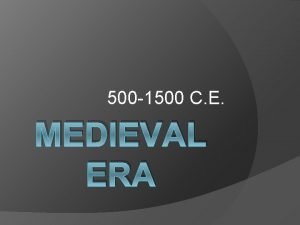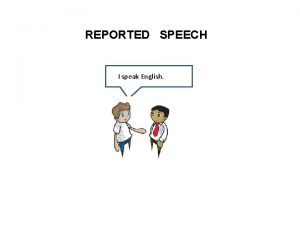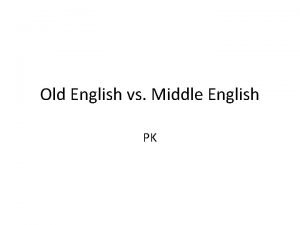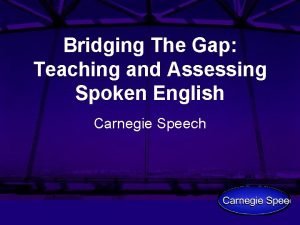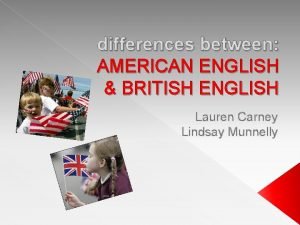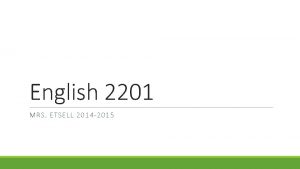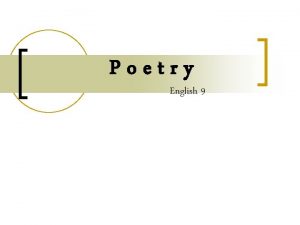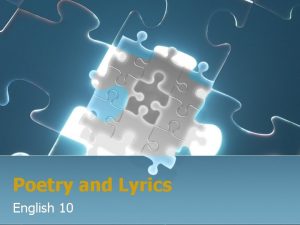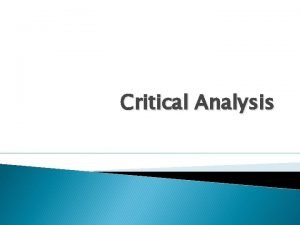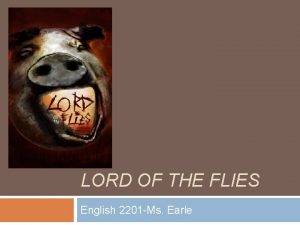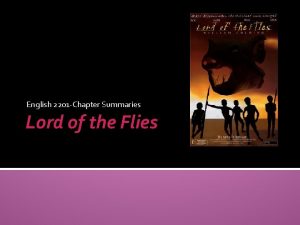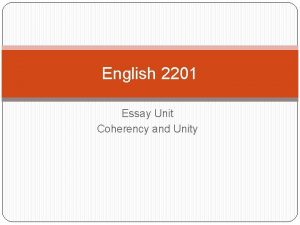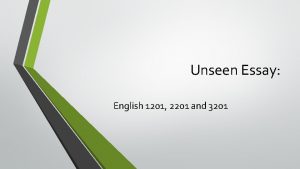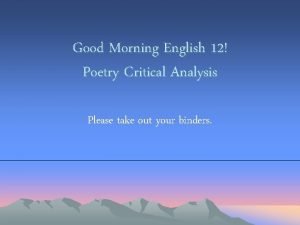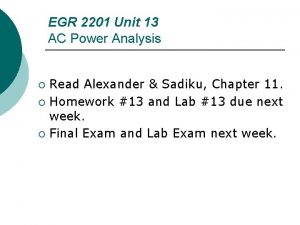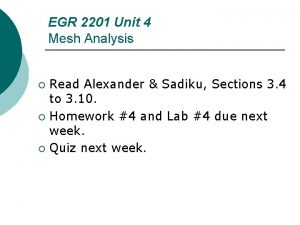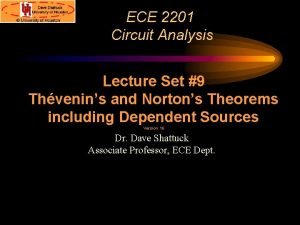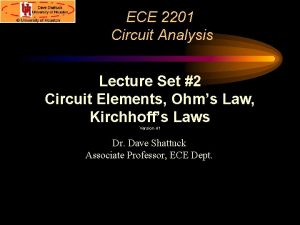Poetry English 2201 Critical Analysis Poetry is A







































































- Slides: 71

Poetry English 2201 Critical Analysis

Poetry is… A way of seeing our world A way of thinking about what we know and think Strongest and most exact form of speech we know Pattern Seeking Thinking Saying Imagination Ideas Feelings Emotions Insight Human life Personal experience

Poetry is full of surprises Artistic expression Personal Expression A good poet needs the elements of language to make the written expression exactly right Verse and stanza form Rhythm, rhyme, repetition, and musical devices of all sorts Personification, simile, metaphor, parallelism and other figures of speech Image and symbol are all a means through which the imagination, ideas and feelings of poet shaped language creating a POEM.

So what is the purpose of poetry? If asked on a test? 1. To share in an experience? 2. To describe … 3. To tell a story 4. 5. What is significant in terms of human life and experiences Imagination Ideas Emotions Feeling

A good poet needs all the elements of language to make the written expression exactly right Poetry is stichic-made of lines So how do we read these lines? Verses- name given to each line of poetry may also apply to stanza, entire poem or even poetry line organization Tercet – 3 line stanza Quatrain - 4 line stanza Sestet – 6 line stanza Octave- 8 line stanza

Terms Literal language: an author’s direct meaning. Abstract language: an author’s indirect meaningsymbolic. Stanza: It is a way of arranging lines of poetry in a pattern based on thought or form, usually according to rhyme and meter. A stanza serves the same function as a paragraph in prose. Refrain: A group of words, phrases, or lines repeated at regular intervals in a poem.

Terms Tone: The general attitude a writer takes toward the subject. Repetition: The recurrence of sounds, words, phrases, or lines in order to emphasize a particular idea. Speaker: The voice telling the poem; a poem may have more than one speaker; the speaker and the poet are not necessarily the same. Diction: The poet’s or writer’s choice of words used in a literary work. Tone

How many stanzas? Read the poem “Poetry” by Pablo Neruda Questions on p. 14 of Echoes complete #1 - #4

In “Poetry” by Neruda the speaker of the poem is

Poetry quoted … Students in groups write a poem entitled______ from the quote sheet as directed by your teacher

“ 1958”by Gwendolyn Mac. Ewen Read pp. 6 -7 Compete questions #1 -#5 on p. 16

NURSERY RHYMES + POLITICAL CARTOONS Questions Caricature What event inspired the cartoon? Who is the target audience? What is the message- does it have a purpose? What do you think of the cartoonist’s opinion is about the topic? Do you agree with cartoonist? Why?

Humpty Dumpty Humpty Dumpty sat on a wall, Humpty Dumpty had a great fall; All the king's horses and all the king's men Couldn't put Humpty together again. Mother Goose

Did you know? Another Version Humpty Dumpty sat on a wall. Humpty Dumpty had a great fall. Threescore men and threescore more Could not place Humpty as he was before History behind the rhyme In England -fifteenth century -a Humpty Dumpty was a term that people used to call someone who was obese. In the eighteenth century it became a way to describe a clumsy person. Humpty Dumpty was a drink which was made by boiling brandy with ale.

Not an egg! Humpty Dumpty was portrayed in Lewis Carroll's 'Through the looking glass' and in the nursery rhyme as an egg, well it turns out that Humpty Dumpty was not really an egg. English civil war, 1642 to 1649 Battle referred to as the Siege of Colchester (1648). Colchester was a walled city and was guarded heavily by the Royalists. Parliamentarians were the enemy and known as Roundheads because of their close cropped hair cuts. Inside the city walls stood a castle and a few churches. One church in particular, St. Mary's, stood right beside the wall.

Did you know? A cannon! A sniper! More info… Humpty Dumpty was believed to be a large cannon that was placed on the wall next to the church. Story has it that the walls of the fortified city were shot at for 11 weeks before finally falling. There is also reference to Humpty Dumpty being a cannon which was placed on the roof of the church and fired by a sniper called 'Oneeyed Jack Thompson'. The wall beneath Humpty Dumpty was destroyed and the cannon fell to the ground. Therefore "All the kings horses and all the kings men" tried to put Humpty back together again by attempting to place the cannon onto another part of the wall. Unfortunately Humpty Dumpty was too heavy and could not be replaced. This siege ended with Colchester being taken by the Parliamentarians. Some say that Humpty Dumpty actually was One-eyed Jack Thompson.

Another version… One –eyed Jack The version with One-eyed Jack Thompson defers only that the church tower was blown up and the cannon fell, and was not able to be mended. An additional verses to the nursery rhyme which go along with the story of the siege of Colchester. Another verse In sixteen hundred and forty eight When England suffered a pain of state The round heads lay siege to the Colchester town Where the kings' men fought for the crown There One-eyed Thompson stood on the wall The gunner of deadliest aim of all From the St. Marys'tower he fired Humpty Dumpty was its name. . .

All from 1 nursery Rhyme One more theory That the story may refer to King Richard III of England, who was depicted as a hunchback monarch in Shakespeare's play. The wall would be a reference to either his horse or the followers who deserted him. It was during the battle of Bosworth Field that he was said to have fallen from his horse and chopped to pieces. Source: The Dorling Kindersley Book of Nursery Rhymes (2000) So how does Rob Ford fit in? Handout worksheet on political cartoons… 1. 2. 3.

Mind map What is Poetry? Review of Poetic Terms

Different Types of Poetry Types of poetry web site List of 55 poetic forms

Narrative Poetry The three main types of poetry are narrative, lyrical and dramatic. The narrative poem can be described simply as a poem with a plot. It may be short or long or simple or complex. The only part which matters is that it tells a story which is often no dramatic and holds an objective regular scheme and meter.

Narrative Poetry The four main types of narrative poems are ballad, epic, idyll, and lay. 1. Ballad: A poem similar to a folk tale which uses a repeated refrain. The Fiddler

Narrative Poetry Epic: A long, serious poem which tells the story of a hero. Idyll : A poem about either an idolized country scene or about the heroes of yesteryear. Lay: A long poem which was sung by medieval minstrels.

The Titanic by E. J. Pratt Read the poem “The Titanic” by E. J. Pratt Questions on p. 102 of Echoes complete #1 - #4

Poetry is the experience of another’s mind When you read a poem for its theme, the poetry lies in the opportunities to experience the very best of someone else’s thinking When you write a poem…

To go through the doorway is To dream To think To imagine To be OR not to be And watch the way the world-web weaves To experience

Experience by Dorothy Livesay Read Echoes p. 11 Complete questions #1#4 on p. 18. "For your own good" they said, And they gave me bread Bitter and hard to swallow. My head felt tired after it, My heart felt hollow. So I went away on my own road Tasting all fruits, all breads: And if some were bitter, others were sweet -- So I learned How the heart is fed. -Dorothy Livesay

Common Magic by Bronwen Wallace Read p. 12 Complete questions #1 -#5 on p. 19

Callum “ ‘Callum’ in memory of a novice miner” by Milton Acorn Read on pp. 24 -25 Complete question #1#4 0 n pp. 33 -34 “I Grew Up” by Lenore Keeshig Tobias Read on pp. 26 -27 Complete questions#1#4 on p. 34

In “Goya’ s greatest scenes we seem to see” Examine theme Study how different forms, techniques , language and styles express meaning Compare ideas Tone Mood Questions #5 -#6 on p. 58 Visual techniques

Human Conflict and Struggle The Colossus by Francisco Goya p. 57

What do you see? Google Colossus! Balance? Shapes? Movement? Texture? Background Focal point Scale: atmosphere, day/ night? Colors ? Size (contrasts) Foreground

“ The Sound of the Gun” by Chris de Burgh Refer to pp. 64 -65 Question #1 -#3 on p. 66 Song

Poetry is music in words: and music is poetry in sound. - - Thomas Fuller List Sound Devices:

Metaphor & Imagery “Hands” by Lorna Crozier Read on p. 119 -122 Complete questions #14

“Ladybird” by Ingrid Jonker p. 116 Questions #1 -#4 0 n p. 124 Gleam ochre and light breaks out of the sea In the backyard somewhere among the washing and a tree full of pomegranates your laugh in the morning sudden and small is like a ladybird fallen on my hand

“Sunset” by Oswald Mtshali p. 117 Questions #1 -#4 0 n p. 124 The sun spun like a tossed coin. It whirled in the azure sky, it clattered into the horizon, it clicked in the slot, and neon-lights popped and blinked ‘Time expired, ’ as on a parking meter.

Philosophical or not? Military Parade The little girl saw her first troop parade and asked. “What are those? ” “Soldiers. ” “ What are Soldiers? ” “They are for war. They fight and each tries to kill as many of the other side as he can. ” The girl held still and studied. “Do you know …I know something? ’ “Yes, what is it you know? ” “Sometime, they’ll give a war and nobody will come. ” Carl Sandburg 1878 -1967

Theme The topic of a poem can be summarized in a word or phrase BUT the THEME of is the idea that an entire poem states and must be expressed as a sentence… Always note the last one or two lines of a poem because a poet often reinforces his main idea there! Examples: True friendship is the light in one’s darkness Love is more enduring than life

“Sonnet 55” by William Shakespeare Read p. 67 Complete questions #1 -#4 on p. 77 What is a couplet? A pair (2)of successive lines in poetry with some meter that usually rhyme. Shakespearean sonnets

Sound Devices & Terms Sound devices: diction used by poet to emphasize, connect words, or create moods. Onomatopoeia: The use of words that suggest the sound it makes. (ex. Buzz, sizzle, hiss, snap, crackle, pop, boo, swish…) Alliteration: The repetition of initial (first) consonant letter or sounds in words group: pitter patter of pale droplets, or “on the bold street breaks the blank day”- Tennyson’s “The Lady of Shallot”.

Sound Devices & Terms Cacophony: a harsh/discordant mixture of sounds (particularly harsh consonant sounds). A harsh mixture of sounds; the opposite of euphony. Ex: the sirens from police and fire trucks The sea crashing against the rocks in a storm Read the following poem and find example of cacophony:

Erosion by E. J. Pratt It took the sea a thousand years, A thousand years to trace The granite features of this cliff, In crag and scarp and base. It took the sea an hour one night, An hour of storm to place The sculpture of these granite seams Upon a woman's face. 1. Explain how the setting of this poem is effective ? 2. How is diction effective illustrated in this poem?

Sound Devices Euphony: A pleasant smootness of sound, especially word spoken in combination. Blend of harmoniously, pleasingly and gentle sounds. Pleasing to the ear Give examples

Do Not Go Gentle into That Good Night By Dylan Thomas 1914– 1953 Do not go gentle into that good night, Old age should burn and rave at close of day; Rage, rage against the dying of the light. Though wise men at their end know dark is right, Because their words had forked no lightning they Do not go gentle into that good night. Good men, the last wave by, crying how bright Their frail deeds might have danced in a green bay, Rage, rage against the dying of the light. Wild men who caught and sang the sun in flight, And learn, too late, they grieved it on its way, Do not go gentle into that good night. Grave men, near death, who see with blinding sight Blind eyes could blaze like meteors and be gay, Rage, rage against the dying of the light. And you, my father, there on the sad height, Curse, bless, me now with your fierce tears, I pray. Do not go gentle into that good night. Rage, rage against the dying of the light. Dylan Thomas, “Do Not Go Gentle into That Good Night” from The Poems of Dylan Thomas. Copyright 1939, 1946 by New Directions Publishing Corporation. Reprinted with the permission of New Directions Publishing Corporation. Write out the rhyme scheme of the poem. List the sound devices used and tell why they are effective. What is theme of the poem?

Lithograph 1965 by Ceri Richards Emotional plea in Dylan’s poem – written to his dying father Do not go gentle into that good night As interpreted by Richards

Boots by Rudyard Kipling Boots Bandoliers-a belt fitted with hoops for holding cartridges

Forms of Poetry Free Verse: A form of poetry that does not follow a set rhythm. Sonnet: A fourteen- line poem that usually follows a set rhyme scheme and rhythm. Ballad: A narrative poem with a song- like form that usually tells a love story, historical event, or a heroic tale. Lyric: A poem that expresses intense personal thoughts, moods, or emotions.

Forms of Poetry Haiku: A seventeen- syllable poem set out in three lines in a five- seven five syllable pattern. Concrete: A poem whose shape or visual appearance contributes to its meaning. Found: A poem created from words selected from public communications (newspapers, magazines, etc. ) and then re- arranged into lines and stanzas.

Calamity by F. R. Scott Calamity What is the Punch Line?

Haiku Haiku: A Japanese poem composed of three unrhymed lines of five, seven, and five morae, usually containing a season word. Read more about haiku poetry. Examples of Haiku

Poets use Figurative Language: Language used in a way that is different from the usual, literal meanining in order to create a particular mental image. Symbolic / Interpretative Simile: A comparison between two unlike things using “like” or “as”. Metaphor: A direct comparison between two unlike things without using “like” or “as”. utusing “like” or “as”)

Figurative Language Personification: Animals, objects or abstract ideas are given human form, actions or qualities. Apostrophe: A passage in which the writer addresses directly a dead or absent person or an abstract or inanimate object. 5. Oxymoron: A figure of speech that combines two usually contradictory terms: “bittersweet”, “a deafening silence”, or “a living death”

Terms and Techniques Imagery: a word or phrase the evokes mental pictures or sensory impressions. Visual Imagery Vision ( see ) Auditory ( hear) Tactile (touch), Olfactory (smell), Taste). Abstract imagery: ideas or concepts that do not appeal to the senses. Identify qualities , attitudes, states, &/or ideas Concrete imagery: It appeals to our senses

Terms and Techniques Rhyme Scheme: The pattern of rhyme designated by the last word in each line and indicated by the alphabet. Rhythm: The regular pattern of stressed and unstressed syllables (beats) we hear in poetry; stress is simply the greater amount of emphasis we give to a syllable in speaking

Terms Assonance: The effect created when two syllables in words close together, especially in poetry, have the same vowel sounds but different consonants (e. g. Face, mailed). The repetition of vowel sounds in a series of words to add a musical effect. Consonance: The repetition of the same or similar consonants in neighboring words (e. g. Coming, home), in some cases the words are identical except for the stressed vowel sound (e. g. middle/ muddle, wonder, wander). The repetition of consonant sounds in a series of words to create a musical effect. Also note ph and f sounds

Terms Allusion: An indirect or passing reference to some event, person, place or work. It is meant to extend the reader’s understanding. It is also an expression designed to call something to mind without mentioning it explicitly. They may be direct or indirect such as a reference to the president of the United States, or a reference to a Shakespearean work, etc.

Terms Connotation: The range of further meanings/ the implied meaning that a word or phrase suggests in addition to the literal /dictionary meaning. Denotation: The literal or dictionary meaning of a word. audience)

Terms Apostrophe: Device in which the narrator addresses a personified abstraction (an absent or imaginary person, quality, or something intangible), as if the thing was present and could reply. The writer addresses directly a dead or absent person or an abstract or inanimate object.

Terms Rhythm: The pattern of accented and unaccented, or stressed and unstressed syllables in a poem. Rhythm is usually created through repetition of a particular pattern, and gives many poems a musical quality. Emphasis is usually placed on contrasting images.

Terms Synecdoche: A figure of speech in which a term denoting a part of something is used to refer to the whole thing, or a whole thing is used to refer to part of it, or a term denoting a specific class of thing such as a species is used to refer to a larger class such as a genus. It can also be general thing used to refer to a more specific thing or a term denoting a material used to refer to a object composed of that material. It is a subclass of metonymy. It is similar to a metaphor. It is used to emphasize an important aspect of a fictional character. (Examples: The hired hands (workers) are not doing their jobs; use your head (brain) to figure it out, “Coke” for soda, “Castle” for home, “Bread” for food, “Judas” for traitor, No creature (person) would believe that story, Those are some nice threads (clothes)

Terms Metonymy: The use of a word for a concept with which the original concept behind this words is associated. It may be instructively contrasted with metaphor. Both figures involve the substitution of one term for another. While in metaphor, this substitution is based on similarity, in metonymy the substitution is based on contiguity. It refers to the use of a single characteristic to identify a more complex entity and is one of the basic characteristics of cognition. (Examples: sweat means perspiration and refers to hard word, dish is an item to eat from and it is a course in dining, press means printing press and refers to new or media)

Free Verse Free verse (vers libre) Poetry written in either rhyme or unrhymed lines that have no set fixed metrical pattern. Found Poetry created by taking words, phrases, and passages from other sources and reframing by adding spaces, lines, or by altering the text with additions or subtractions. Read more about 55 Types of Poetry Forms by www. poemofquotes. com Free verse (vers libre) Poetry written in either rhyme or unrhymed lines that have no set fixed metrical pattern. Some topics to consider: pollution, peace, nuclear waste, conservation, famine, weather, friendship, etc

How to Eat a Poem by Eve Merriam Don’t be polite. Bite it. Pick it up with your fingers and lick the juice that may run down your chin. It is ready and ripe now, whenever you are. You do not need a knife or fork or spoon Or plate or napkin or tablecloth For there is no core or stem or rind or pit or skin to throw away

Who says it can’t be a poem? Visual: The visual arrangement of text, images, and symbols to help convey the meaning of the work. Visual poetry is sometimes referred to as a type of concrete poetry.

DESCRIPTIVE-CONCRTER POETRY

A Poem is a a door to someone else’s mind, not a mirror to reflect your own.

Common Questions Who is the speaker of the poem? From what point of view is the poem written? Who is the narrator of the poem? How is characterization effectively developed in the poem? Does the character change in the poem. Explain the effectivenes of the title. Identify a poetic device(imagery, figurative language, symbolism, sound devices) in the poem given and explain how it reveals a theme ( thematic statement). Explain the poet’s purpose in the poem and how it relates to the title. What is the tone of the poem? How is it effectively developed through diction? What is the literal meaning of the poem? The figurative meaning? What is the mood of the poem? How is it effectively developed through imagery? Does the poem exhibit stylistic devices? How is the poem divided? How are transitions and transitory lines effective in creating the tone/mood of the poem? What is the occasionof the poem?

Tone – the writer’s attitude towards their subject Three categories: Serious/ Rational tone – writer uses evidence Emotional tone – writer uses figurative language, repetition Combination of both Examples of tone: Happy, sad, thoughtful, disgust, arrogance, bitterness, cynical, fury, wonderment, humorous… Review TONE handouts

Handouts Poetry Terms & Notes Poetry Examples Test

The End
 Critical semi critical and non critical instruments
Critical semi critical and non critical instruments Spaulding classification of medical devices ppt
Spaulding classification of medical devices ppt Erosion poem analysis
Erosion poem analysis Symbolism in night elie wiesel
Symbolism in night elie wiesel National 5 critical essay questions poetry
National 5 critical essay questions poetry Conrad fitzgerald academy
Conrad fitzgerald academy Ece 2201
Ece 2201 Api rp 2201
Api rp 2201 Ece 2201
Ece 2201 Ece 2201
Ece 2201 Ece 2201
Ece 2201 Biology 2201
Biology 2201 Uh ece 2202
Uh ece 2202 Compare non-critical readers with critical readers.
Compare non-critical readers with critical readers. Nnn poem
Nnn poem Literary analysis structure
Literary analysis structure Different critical lenses
Different critical lenses Critical analysis of emma
Critical analysis of emma Critical analysis of the fall of the house of usher
Critical analysis of the fall of the house of usher Burning a book poem meaning
Burning a book poem meaning Marriage is a private affair
Marriage is a private affair Literary criticism approaches
Literary criticism approaches Freedom writers criticism
Freedom writers criticism Analysis literary definition
Analysis literary definition What is critical thinking wikipedia
What is critical thinking wikipedia Limitations of new criticism
Limitations of new criticism Cpa critical path analysis
Cpa critical path analysis 8 literary approaches
8 literary approaches One's self i sing walt whitman analysis
One's self i sing walt whitman analysis Difference between simulation and dissimulation
Difference between simulation and dissimulation Simulation and dissimulation by francis bacon
Simulation and dissimulation by francis bacon Three days of the condor cda
Three days of the condor cda The wasp factory analysis
The wasp factory analysis Night by alice munro summary
Night by alice munro summary Shroud by munshi premchand
Shroud by munshi premchand Queer theory in literary criticism ppt
Queer theory in literary criticism ppt Critical loss analysis
Critical loss analysis Stott and davis model
Stott and davis model A valediction: forbidding mourning analysis line by line
A valediction: forbidding mourning analysis line by line Applying critical approaches to literary analysis
Applying critical approaches to literary analysis Byrne and long consultation model
Byrne and long consultation model What is critical discourse analysis
What is critical discourse analysis Formalist approach literature
Formalist approach literature Mrs slipslop in joseph andrews
Mrs slipslop in joseph andrews Albatross (metaphor)
Albatross (metaphor) Experimentation in modern poetry
Experimentation in modern poetry Famous non narrative poems
Famous non narrative poems Augustan poetry vs romantic poetry
Augustan poetry vs romantic poetry Almond trees poem
Almond trees poem Medieval poetry in english literature
Medieval poetry in english literature Flower poetry in english
Flower poetry in english Edexcel igcse english literature paper 2
Edexcel igcse english literature paper 2 Allama iqbal poetry in english
Allama iqbal poetry in english Broken rhyme definition
Broken rhyme definition Preface to the fables pdf
Preface to the fables pdf Romantic literature characteristics
Romantic literature characteristics Aqa a level english literature b poetry anthology
Aqa a level english literature b poetry anthology Touchscreen slam poem
Touchscreen slam poem Oral english text
Oral english text Eduqas english literature poetry
Eduqas english literature poetry Speak theme
Speak theme Spoken english and broken english summary
Spoken english and broken english summary Phonological change examples
Phonological change examples Who is the father of english drama?
Who is the father of english drama? Old english vs modern english
Old english vs modern english British and american word differences
British and american word differences British and american word differences
British and american word differences Old english vs modern english
Old english vs modern english Do you speak english reported speech
Do you speak english reported speech Examples of old english
Examples of old english The gap between written and spoken english
The gap between written and spoken english American english and british english
American english and british english


